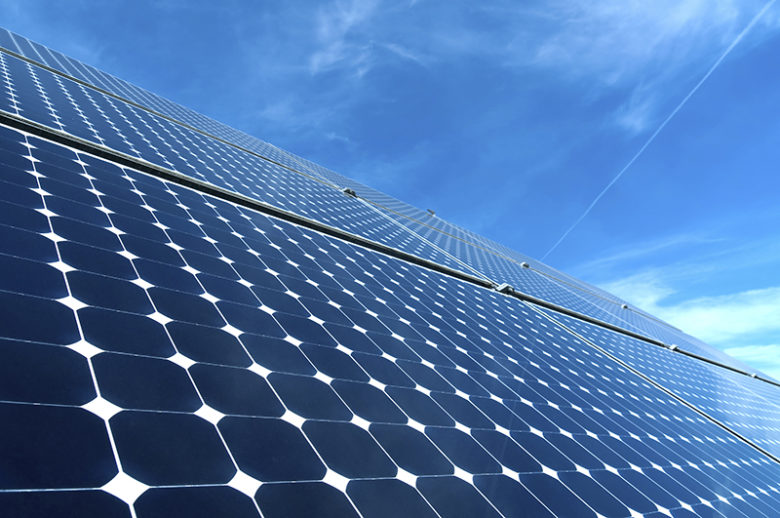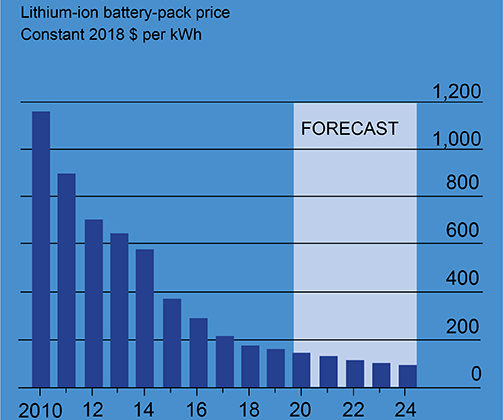Energy Storage
On-site energy storage systems, such as battery storage or TES, assist both electrical and thermal grids in satisfying peak demand and increasing overall system reliability. Heat recovery is a similar solution that helps achieve zero carbon. These systems work by reclaiming/dispensing thermal energy from/to sources like wastewater, storm water, and open bodies of water.
Geo-exchange
For building heating and cooling, geo-exchange thermal energy is supplied to or extracted from the earth’s surface. The advantage of geo-exchange is that the earth’s temperature is stable over time; for example, in some regions of the world, soil temperature below the frost line remains a constant 45°F-50°F (7°C - 10°C) year-round. In other words, geo-exchange uses Earth’s outer layers as a rechargeable thermal battery. This strategy works best in specific climates and involves geotechnical, civil works, and landscaping considerations.
Geothermal Energy
Another promising solution is Geothermal Energy (which differs from geo-exchange). It uses thermal energy from deeper layers of the earth (2500 meters+) to provide higher temperature heat that could be used for process heat or to distribute thermal energy for heating on a larger scale.
Small Modular Reactors (SMR)
SMRs can be safely deployed in remote areas and would provide carbon-free electricity up to 600-1200 MWe per unit, in parallel with high-grade process heat (up to 1112°F (600°C) for capacities up 1.5 Billion BTU), or heat that can be used for city-wide heating.
The Challenges Ahead
Implementing any of the above-mentioned solutions carries challenges, the main one being economics. Any zero carbon solution has to deliver a competitive return on investment for cost per unit of energy, total capital cost, operational cost, and marginal cost for system reliability for mission-critical applications. These emission-free solutions may, however, offer future economic advantages when compared to traditional methods.
The advantages become clear when considering economic risk factors such as carbon pricing, cost of depreciation of assets due to regulation, and legislative risk, as well as cost savings of new zero carbon technologies arising from future technological disruption. For example, the heat pump market has been changing rapidly in the past two years (2018-2020), introducing large-scale heat pump systems at lower cost which makes them financially competitive.
Other challenges to zero carbon energy solutions may prove more problematic; for example, the challenges of business repositioning for some energy stakeholders, such as fossil fuel energy producers, distributors, resellers, and equipment vendors. Repositioning businesses to benefit from the zero carbon transformation can induce substantial resistance to change, perhaps due to accelerated time frames, as well as human capital problems, or due to changing demands for skills in the job market.
Planning and deploying an effective energy strategy, including creating and implementing resilient and adaptive energy roadmaps that can actively respond to changing economic and environmental conditions, is a solid start to a zero carbon energy transition.
Our highly skilled energy consultants are available to discuss low/zero carbon energy options and the transformation solutions best suited to your needs.
For more information, contact lowcarbon@hhangus.com
Resources:
Summary for Policymakers – IPCC
https://www.ipcc.ch/2018/10/08/summary-for-policymakers-of-ipcc-special-report-on-global-warming-of-1-5c-approved-by-governments/
A Clearer View on Ontario’s Emissions - The Atmospheric Fund,
https://taf.ca/publications/a-clearer-view-on-ontarios-emissions-2019/
Deep Lake Water Cooling System - ACCIONA https://www.acciona.us/projects/construction/port-and-hydraulic-works/deep-lake-water-cooling-system/
Geothermal energy - IRENA https://www.irena.org/geothermal







